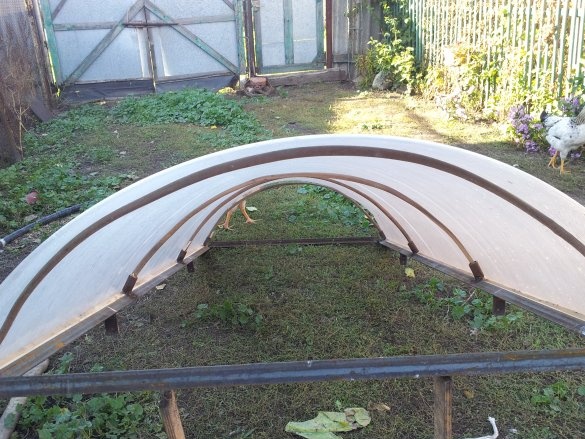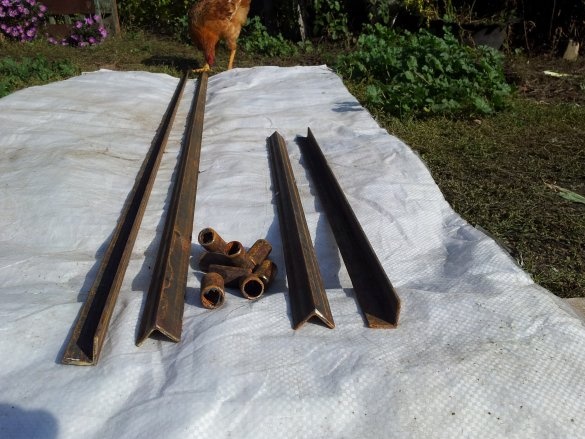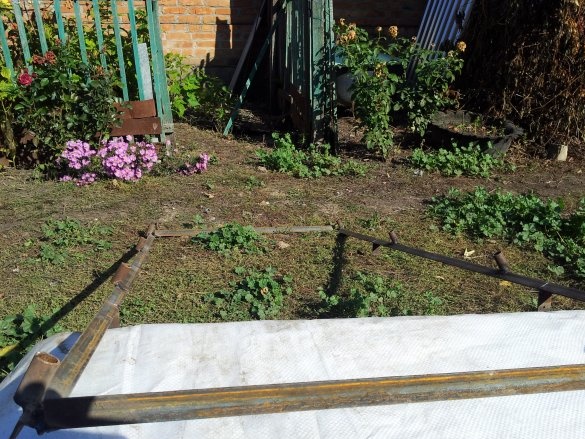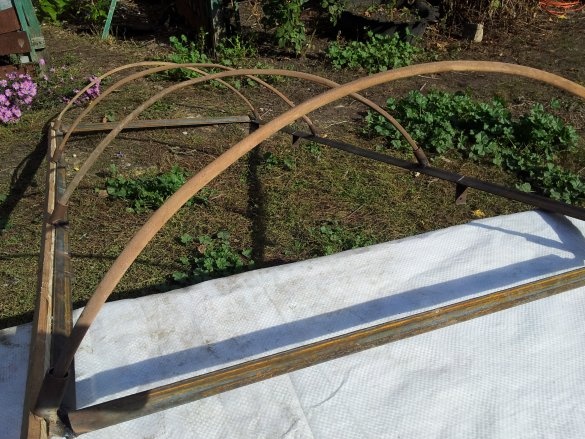Hello. I want to tell you about my design of the "greenhouse-roof", which successfully provides the early cultivation of vegetables, protects plants from rainfall, making it unnecessary to use chemistry from diseases. My long experience in gardening has shown that the condition for protecting plants from rainfall is of great importance for a good harvest. In this case, the plants are much less sick and do not need to apply chemistry. I used to use plastic wrap, which was effective, but very short-lived. The main problem was the wind, which we very quickly torn the film. I have long been thinking of using polycarbonate sheets, but only this year I managed to realize the idea. The result was successful. The result was a lightweight, portable, fairly cheap design that meets all my requirements.
The produced stationary greenhouses based on polycarbonate sheet have disadvantages. I saw such greenhouses in the summer, to lower the temperature inside, they even covered the top with non-woven material, which reduced the luminous flux and, naturally, the efficiency of the greenhouse itself. In early spring, seedlings need to be either additionally covered or well-heated all such a greenhouse. And the most important thing for me is that I can easily install my “greenhouse-roof” design anywhere in the garden, unlike the stationary one, which is rigidly installed. Using several of these designs, I can cover the seedlings on a long bed where drip tape is laid. In the spring, I don’t need a lot of heat so that the seedlings do not freeze, it is enough to cover the “greenhouse-roof” with a film or covering material, since it lies on the ground. By lifting the structure to the posts, as the seedlings grow, I protect the plants from rainfall, protect against sunburn, and make them more comfortable. Plants almost do not get sick and do not need to apply chemistry. As a result, I get a high, environmentally friendly, crop of vegetables.
For the manufacture of the "greenhouse-roof" frame, I used a 25mm metal corner. I cut two pieces of 206cm and two pieces of 90cm.To install the arcs, I cut 8 pieces 40 mm long from a pipe with a diameter of 21 mm. To fix wooden slats with self-tapping screws (4.2x16 for thin sheets), in long pieces of a corner, with a 4.5mm drill, I drilled 10 holes in each piece of a corner. This set of parts is presented in the first photo.
Further, having placed a long piece of the corner, on a horizontal surface, so that the right angle was directed upward, welded 4 pieces of pipe, at regular intervals. Also made with the second piece of the corner. Next, placing the parts on a horizontal surface, according to the desired size, welded short pieces of the corner. The result is the design shown in the second photo.
Then, with the help of self-tapping screws, I fixed a wooden rail (profile 40mm-20mm), made of coniferous wood, first on one side. Then he installed arcs and after that secured the rail on the other side.
Thus, a rigid structure was obtained, presented in the third photo. I use pieces of aluminum wire as arcs, in isolation, from a very old, powerful, three-phase cable, 110 cm long.
Well, the fourth photo shows a fully assembled "greenhouse-roof", which was obtained after fixing the desired piece of 4mm sheet transparent polycarbonate. For fastening, self-tapping screws (4.2x16 for thin sheets) were used, with a pitch of 12-15 mm, which provided the necessary strength from the wind.
Sincerely, Nikolay Voydetsky.





